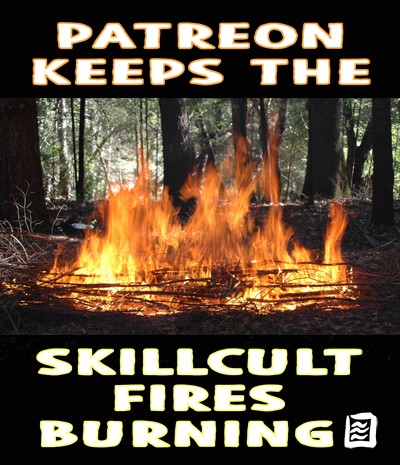Cute and practical, just how I like 'em!
Last winter I started a project oak bark tanning a deer skin to make leather for the axe strop project. The project follows the collecting and processing of materials to build pocket sized sharpening strops as prizes for people who completed the Axe Cordwood Challenge. I'm making everything I need for the strops and decided to show the whole tanning process and everything else in a series of videos. Almost 6 months ago, I laid the prepared skin away to tan in oak bark. It sat in there about 4 months longer than it needed to, but I took it out and finished it this week, and it looks like it turned out pretty decent.
The leather is perhaps a little light and spongy, "Empty", as they say in the tanning trade. Emptiness results from the loss of structural proteins in the skin by chemical or bacterial action. It isn't much of a surprise considering that I over-limed it to start with, and that it sat in a weak vegetable tanning (plant based) solution for 4 months longer than it needed to. Those are actually the type of things that a tanner might do on purpose to a hide in order to make the finished leather soft and pliable. That's not what I was planning though. I would prefer a rather firm and weighty leather for this project, but that is not even the nature of deer to start with. Deer skin, at least our deer skin here in the Western U.S. has an open, coarse-fibered, low density character that lends itself well to softened leathers. It would have been better to move it through the process faster with shorter liming time. But, a process that uses somewhat preservative solutions like lime and tannin, begs for procrastination. Add that I have to make videos of it all and it's a perfect storm for not getting things done in a timely manner. It will probably work fine for the project, but I haven't assessed it closely yet. If it doesn't work out, I have plenty of other skins I've tanned over the years that are suitable and I got to show the process start to finish, with some of the warts and mistakes that any home tanner is likely to experience.
The next steps will be making the wooden paddles, making glue and putting it all together into the finished product. I only need a small amount of leather for the project. Seven brave and industrious individuals chopped one cord or more of firewood for the cordwood challenge using axes only and will receive a finished strop and a leather patch when they are made. The balance of the leather will be stowed away with the rest of my leather cache, to wait for a suitable project.






